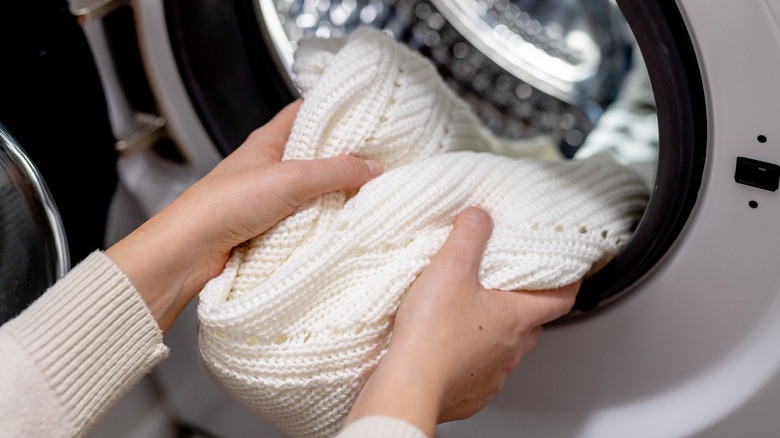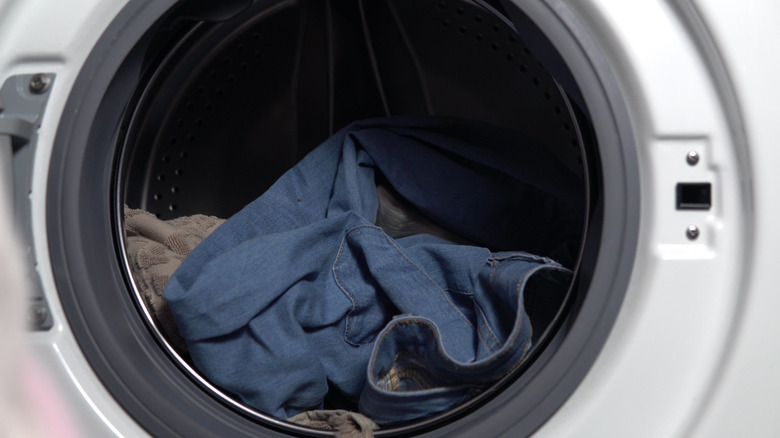Think Twice Before Drying A Smaller Load To Save Time On Laundry Day
If you're short on time when finishing up a load of laundry, you might think that putting a smaller load into the dryer will help you dry your clothes faster. After all, we all know that a packed dryer tends to take much longer to finish a cycle. That's because there isn't sufficient enough space for the warm air to flow between the items, keeping them damp for longer. So the opposite must be true, right? As it turns out, it's not. Having too small of a load in your dryer can also cause longer wait times but for a whole different reason. This time, it has to do with weight — if the load is too light, the dryer sensor might not clock its moisture level correctly, and the appliance will keep the heat going.
It might seem like driers are having something of a Goldilocks moment, where they won't function correctly if they're both too full or too empty. But it's not as complicated as it seems. You just need enough items in the drum for the appliance to correctly asses how much heat it needs, but not so many items that it would be difficult for the air to circulate. Here's why throwing in only a t-shirt or two won't speed up your laundry's drying time.
Why a small load creates longer drying times
According to trusted appliance brands such as LG, a load that is too small can increase your drying time because the sensor inside the appliance can't detect how damp the pieces are. Instead of just going by a designated time limit, modern dryers rely on this moisture sensor inside the drum to gauge how long the clothes should be exposed to heat. This sensor comes in the form of a small strip, which clothes or linens brush past as they tumble. If the items feel dry, the cycle will end sooner. If they feel damp, the cycle will extend. If you pop in a mini load, the pieces are likely to miss the sensor entirely, resulting in the cycle continuing for longer. For context, the strip is situated right behind the lint trap.
Secondly, a small laundry load also has a tendency to plaster against the drum as it rotates instead of freely tumbling in the middle. Since it's stuck to the drum, the warm air doesn't circulate around it. This will leave it damper for longer, increasing the drying time.
How to get the load right
So, what is considered too small? Generally, anything below 6.5 pounds might be regarded as a small load and can cause you longer drying times. However, this will vary depending on how big your dryer is. A small load dryer will allow you to get away with less inside its drum, whereas a large load dryer will require you to add more. If you're not sure how big a six-pound load is and want to eyeball the amount instead, then the general rule of thumb is to fill the drum halfway full. That way, there isn't too much negative space between pieces, but there is enough room for warm air to circulate freely.
If you would like a more specific answer, you can also check your dryer manual. This will provide you with the recommended load size for your particular drum capacity, allowing you to fill it in an energy- and time-efficient way. If you no longer have a paper copy, you might be able to find a PDF version online by searching your brand and model.


